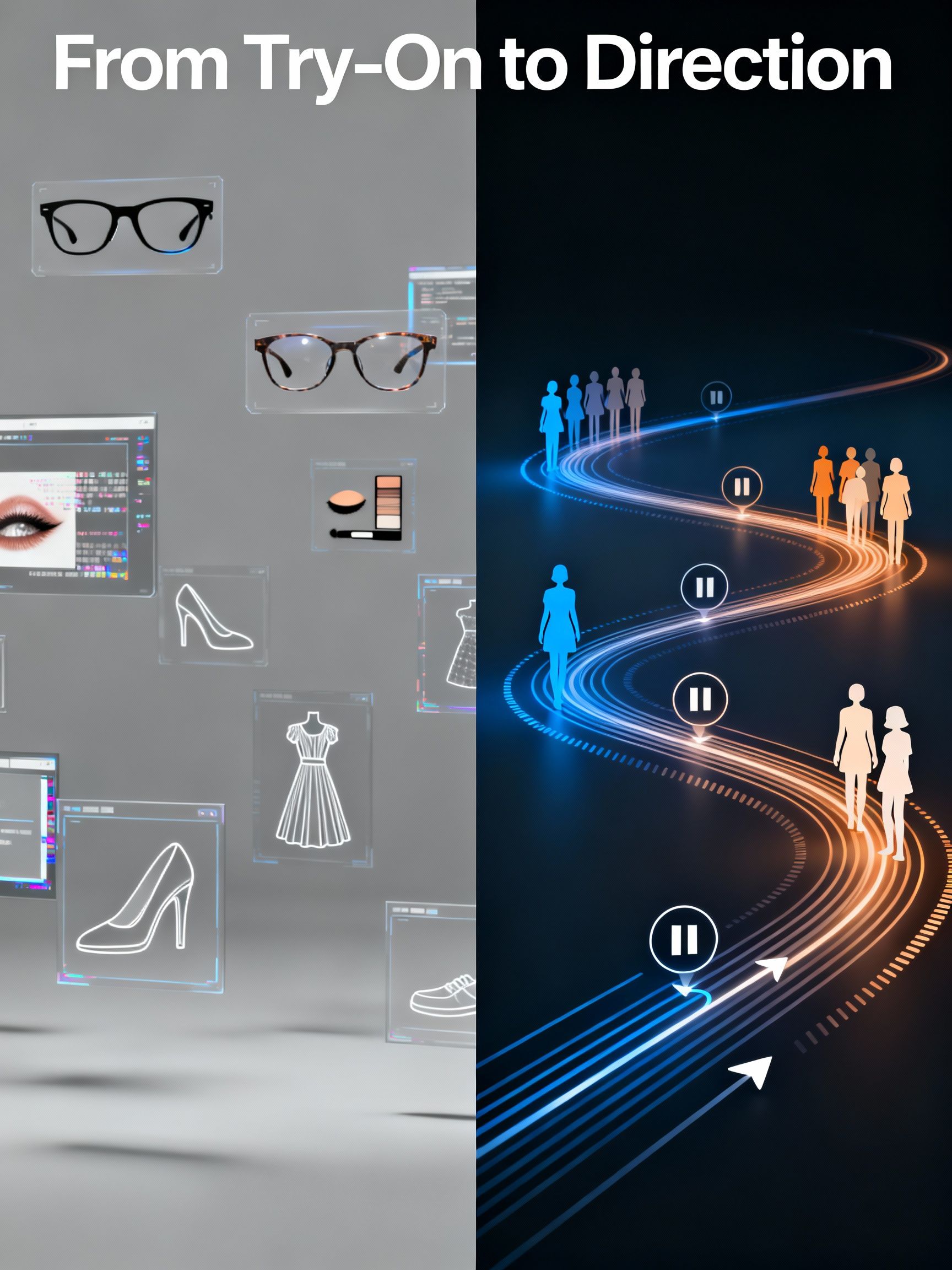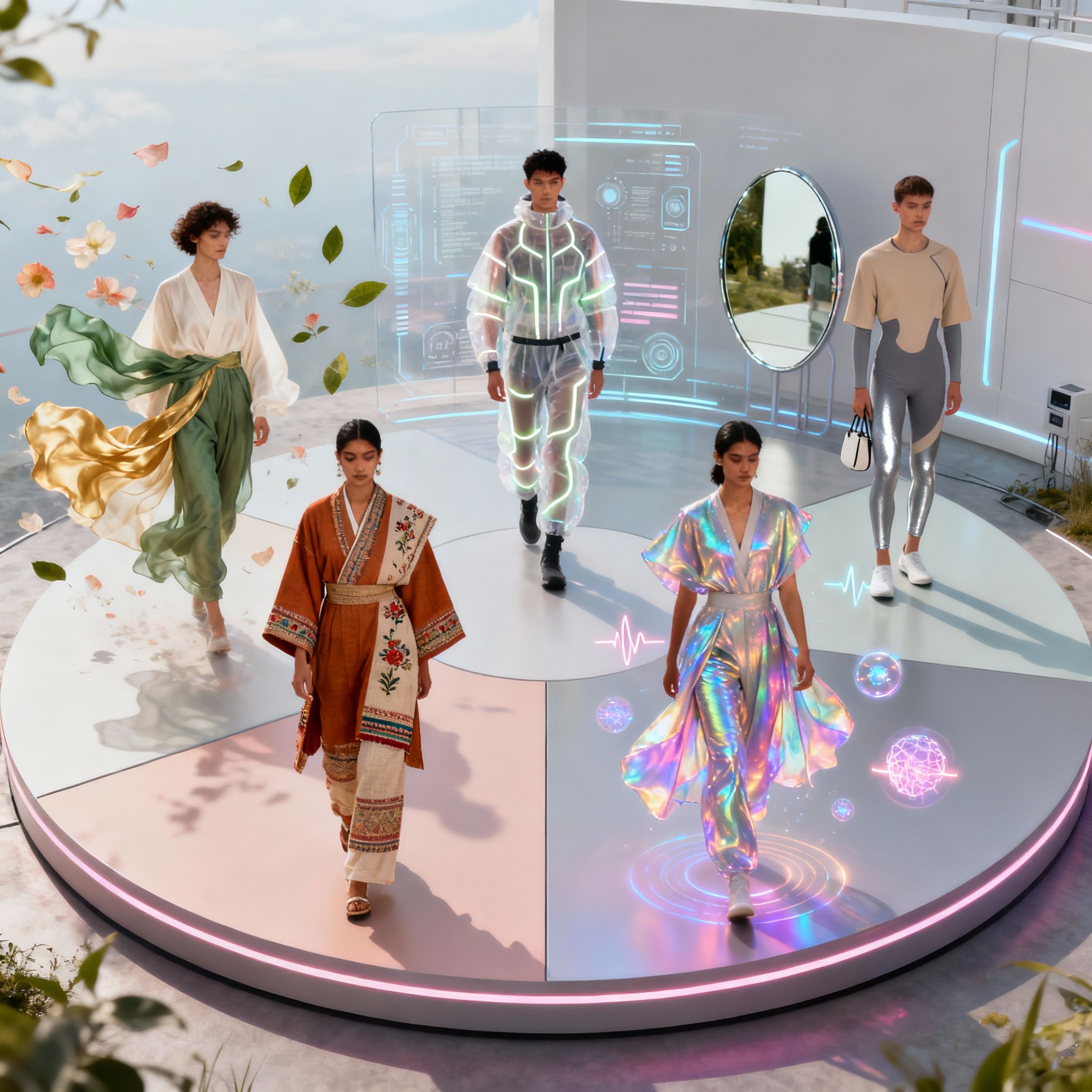How an AI Fashion Assistant Learns Your Style
Fashion and Mental Health: Connection Between Style & Stress
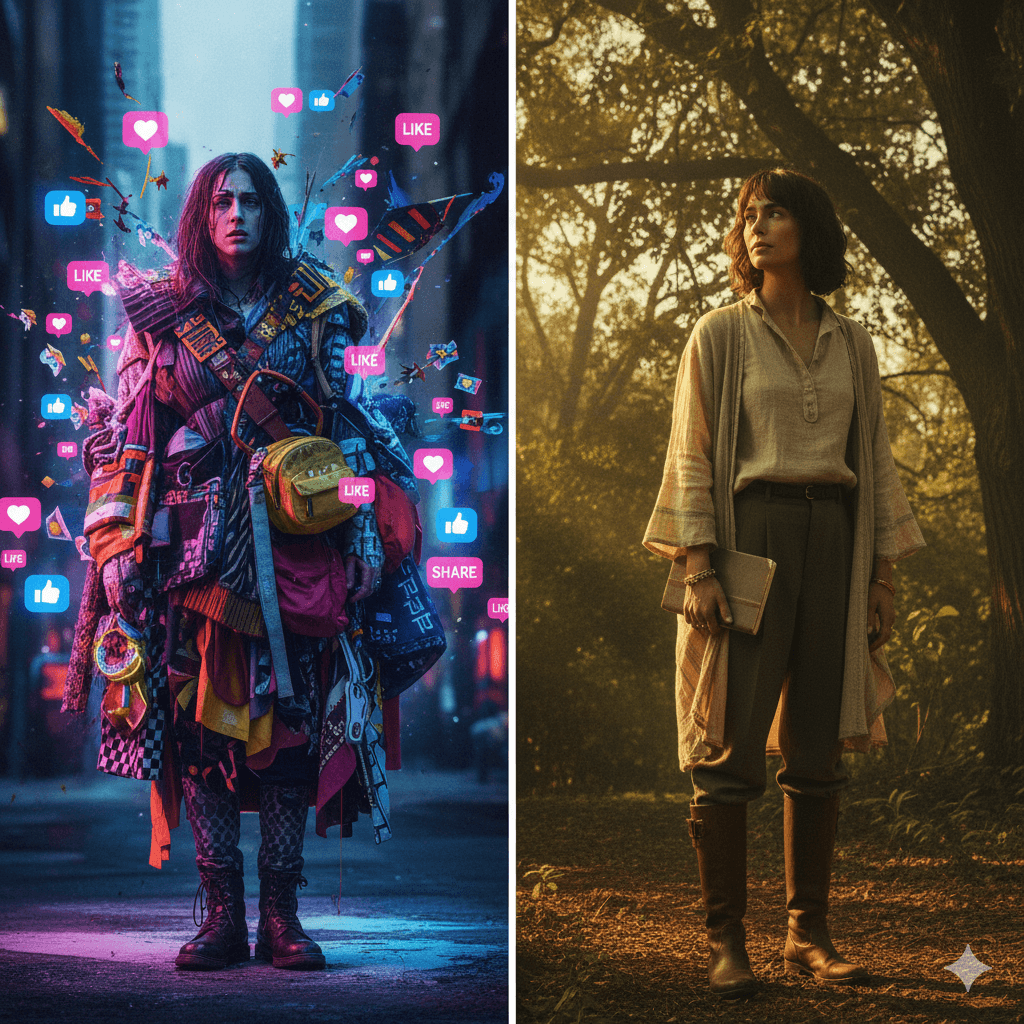

TL;DR
Fashion influences self-perception more than most people realize. When used consciously it can boost confidence and emotional wellbeing. However constant trend cycles, fast fashion pressure and social media comparison can fuel anxiety, low self-esteem and decision fatigue. Fashion becomes healthy only when it aligns with personal identity not external validation. Tools like intelligent outfit planning and personalized styling can support in balancing fashion and mental health
Fashion is often introduced to us as something personal. “Wear what you love,” we’re told. “Style is expression.” Yet, somewhere between self-expression and constant trend-chasing, fashion became a source of anxiety, self-comparison, and emotional fatigue.
Fashion no longer lives only in closets. It lives on screens. It follows us on social media. It interrupts our peace when a new micro-trend drops every two weeks. It pushes us to update our wardrobes not because our clothes are worn out, but because the internet tells us we have “fallen behind.”
For many people, fashion is joy. For others, it’s pressure. For most, it’s both.
The relationship between fashion and mental health keeps us challenged. From empowerment to insecurity, and from creativity to burnout; the fashion industry and fast fashion cycles contribute to emotional strain.
Making us question:
Can fashion become mentally healthier again?
Why Fashion Holds So Much Power Over Our Emotions?
Fashion and mental health go hand in hand. Why? Because clothing interacts with identity. What we wear shapes how we view ourselves and how others view us. There is an entire field that studies this phenomenon: “enclothed cognition”, the science of how clothing influences psychological processes.
Fashion can:
- Boost confidence
- Help with emotional regulation
- Promote self-expression
- Create belonging or social connection
But the same influence can become harmful when external validation drives clothing choices instead of self-expression.
Fashion isn’t just what you wear.
It’s how you feel while wearing it.
Fast Fashion: The Actual Mental Burden
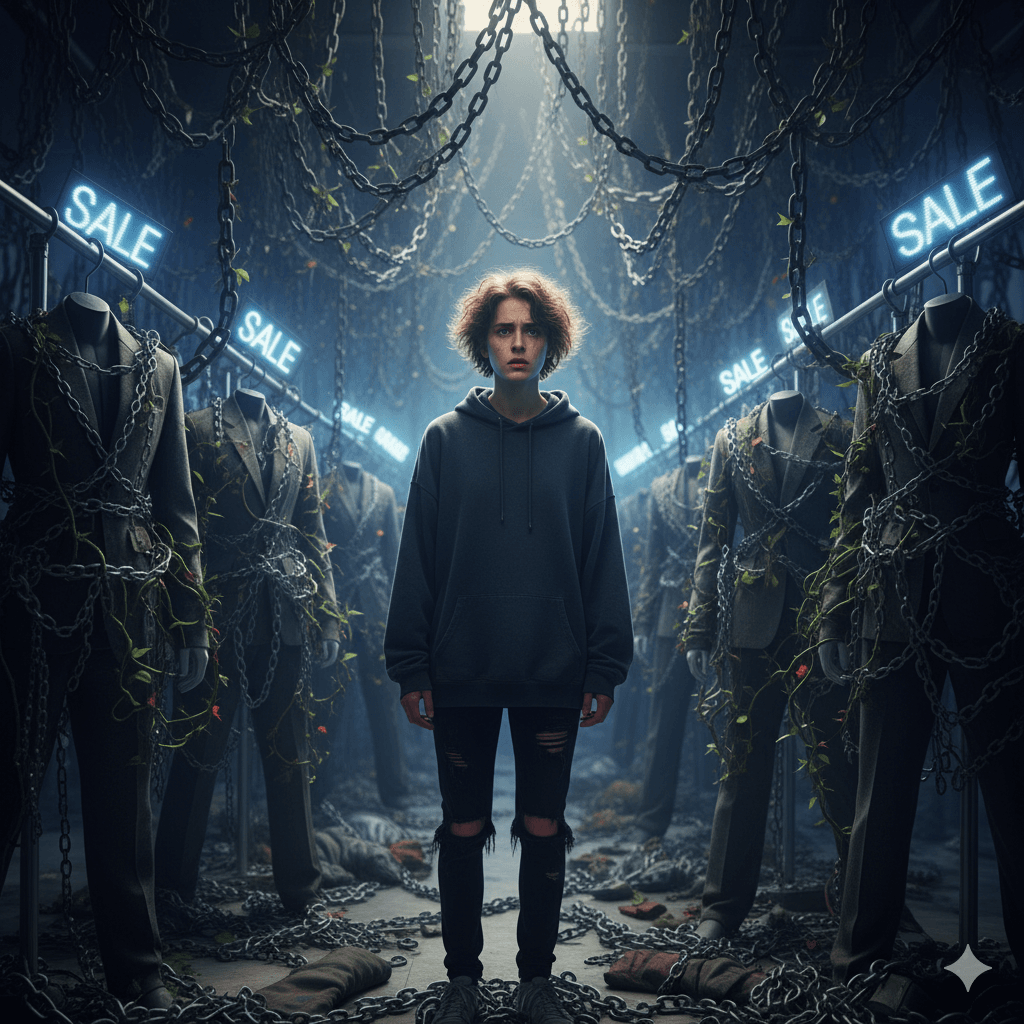
Fast fashion rewards constant consumption.
Every week, new micro-trends emerge—balletcore, quiet luxury, tomato girl, blokecore, mob wife aesthetic…
And as soon as someone invests in a look, the trend expires.
For many, fast fashion triggers:
- Anxiety ("I need to stay relevant")
- Low self-esteem ("I don’t look good enough")
- Impulsive spending ("Everyone is wearing this, I need it too")
- Guilt or shame ("Why did I buy this? I don’t even like it")
Fast fashion doesn’t just clutter closets—it clutters minds. And this defines the whole relationship between fast fashion and mental health.
When 50% of Gen Z says fashion trends contribute to their mental health struggles, it’s a sign: the system pushes people to chase a standard they can never reach.
The problem is not fashion.
The problem is that fashion became performance.
The Social Media Amplifier for Fashion and Mental Health: A Comparison Machine in Your Pocket
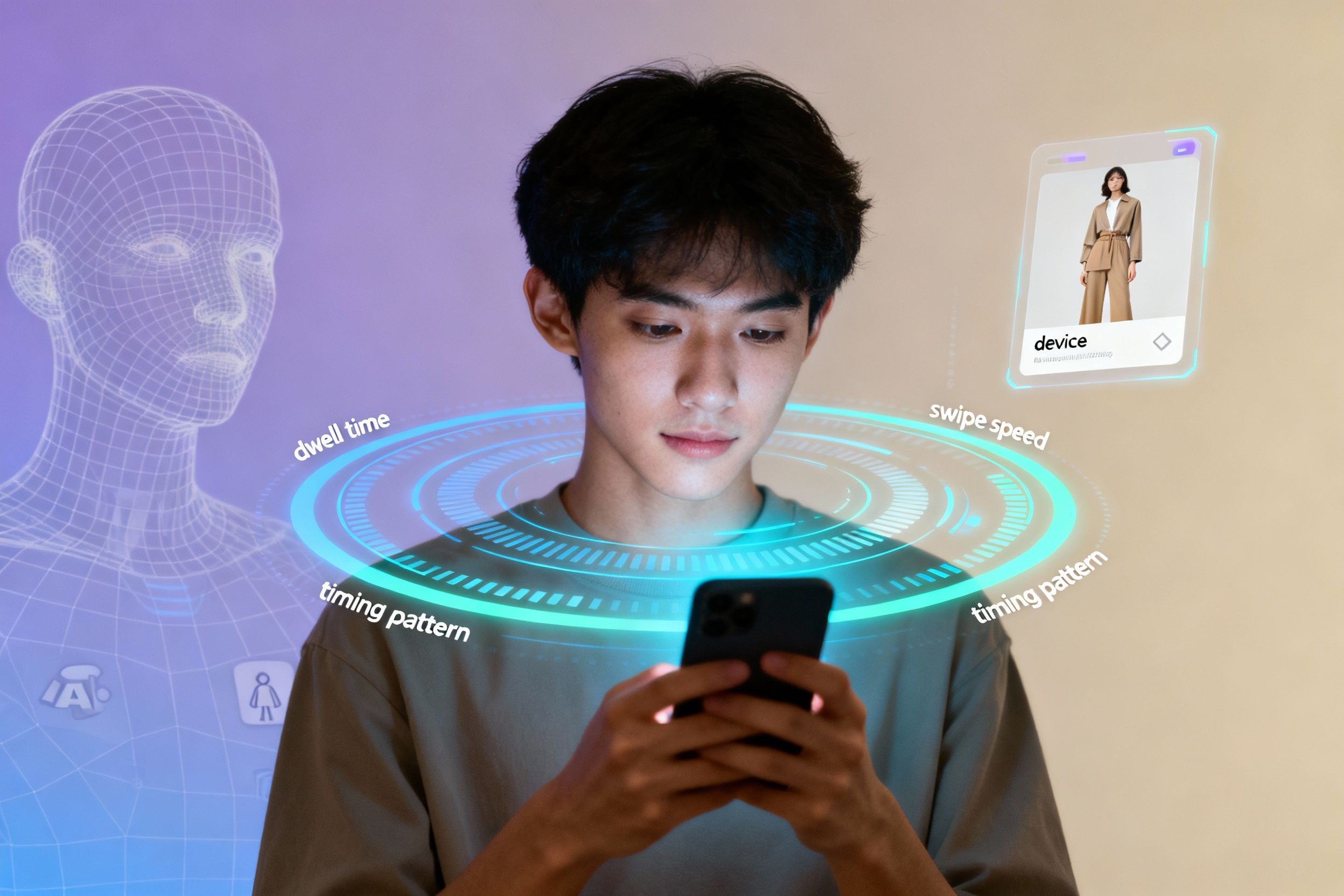
Before social media, most people discovered fashion through magazines, catalogs, or occasional runway coverage. Inspiration existed, but it wasn’t constant, and it rarely intruded into everyday life; which meant fashion and mental health were not as tightly intertwined or influenced by comparison culture as they are today.
Now?
In a single scroll, we see:
- Perfect outfits
- Perfect bodies
- Perfect lighting
- Perfect lifestyles
All heavily filtered.
Platforms like Instagram, Pinterest, and TikTok have turned fashion into a daily performance, where validation is measured in likes, comments, and followers.
48% of teenagers say this constant exposure harms their mental health.
Inside the Industry: The Relation between Fashion and Mental Health
People often romanticize working in fashion—runways, design studios, events.
Reality:
High stress, brutal deadlines, body image scrutiny, and constant pressure to create “the next big thing.”
Studies reveal:
- Fashion professionals are 25% more likely to experience mental illness.
This isn’t a coincidence—it’s culture.
The system rewards:
- Overworking
- Perfectionism
- Sacrificing personal well-being for creative output
Fashion is one of the few industries where your worth is visibly judged every day.
The Positive Impact of Fashion and Mental Health
Despite the challenges, fashion can also improve mental health.
Wearing the right clothes can:
- Boost dopamine
- Improve mood
- Increase confidence
- Help manage anxiety
People use clothing as emotional signaling:
- Soft, oversized fits during anxiety
- Bright colors when feeling confident
- Tailored looks for big performance days
Fashion can be therapy when:
- You choose clothes for yourself, not for others
- You dress for comfort, not validation
- You build a wardrobe that reflects your identity—not trends
Fashion becomes empowering when it stops being a mask, and becomes a mirror.
The Future: Fashion That Supports Your Mental Well-being
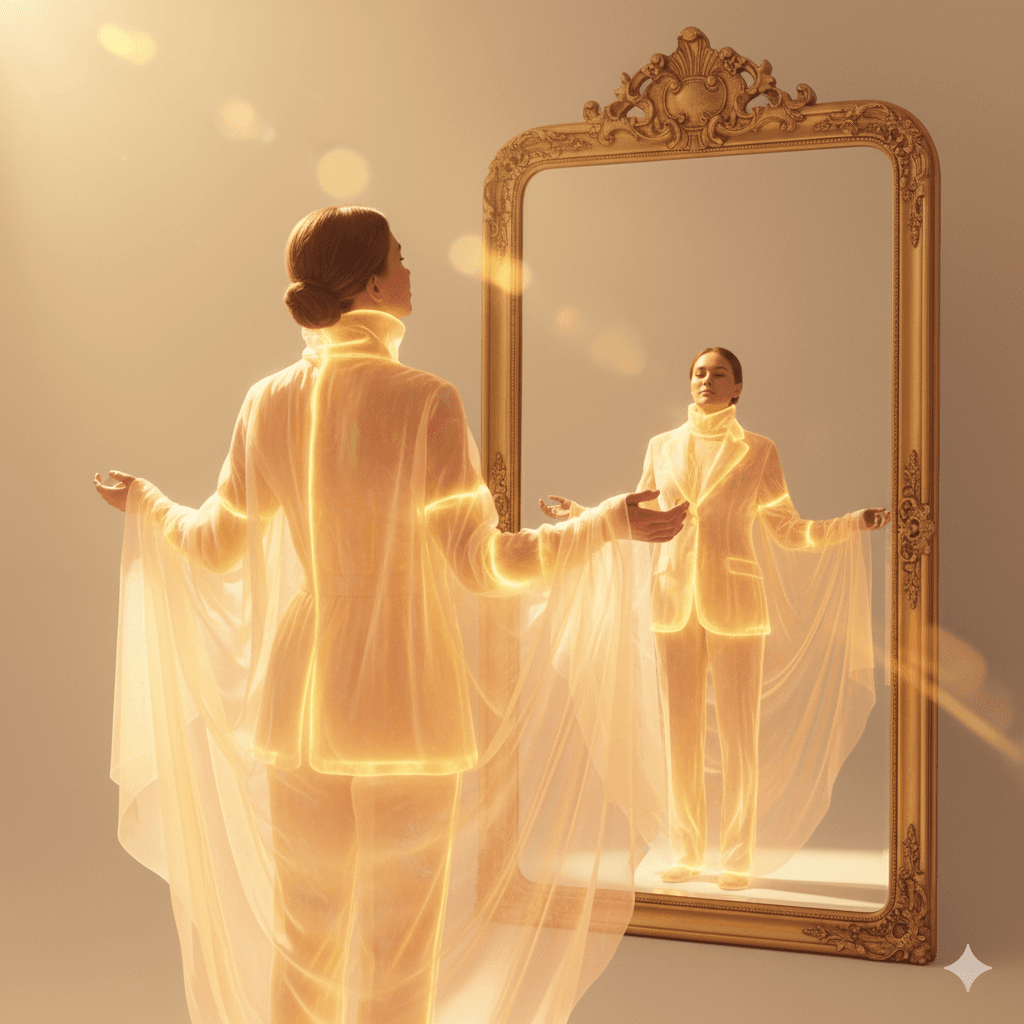
Technology is reshaping how people discover and wear fashion—and it may hold the key to healthier experiences.
Instead of forcing people to chase trends or algorithms, modern fashion platforms are beginning to focus on personal relevance, emotional connection, and individuality.
Glance is moving this conversation forward.
How Glance Encourages a Healthy Relationship With Fashion and Mental Health
Glance doesn’t push people to chase endless trends. It enforces healthy connection between fashion and mental health
Instead, Glance learns preferences, mood, lifestyle, body comfort, and long-term wardrobe needs. It becomes a personal guide—not a pressure point.
Glance:
- Prioritize how clothes make you feel, not how others will judge them.
- Suggests outfits based on existing wardrobe pieces.
- Encourages slow, thoughtful dressing instead of impulse trends.
- Helps users connect with clothing that matches identity, not insecurity.
The focus is on balance:
Feeling inspired, not overwhelmed.
Feeling seen, not judged.
Fashion should be discovery—not pressure.
How to Build a Mentally Healthy Wardrobe
Here’s a mindset shift to repair your relationship with fast fashion and mental health:
- Wear what feels right before worrying about what looks “right.”
- Choose comfort without apology.
- Stop buying trends you don’t even like.
- Invest in pieces that reflect your true identity.
- Treat fashion as a tool for self-care, not self-comparison.
The most sustainable outfit is one that makes you feel good, emotionally and mentally.
Conclusion
Fashion can fuel confidence and creativity, but the industry’s current pace and pressure can harm mental well-being—especially for young people. When clothing becomes performance instead of expression, people lose the joy of dressing.
The healthiest version of fashion and mental health is slow, thoughtful, and rooted in identity.
With platforms like Glance shifting the focus toward meaningful, personalized fashion discovery, there’s a path forward where clothing becomes empowering again—not overwhelming.
FAQs Related to the impact Fashion and Mental Health
Q1. How does what we wear affect our mental health
What we wear influences self confidence mood and how others perceive us. Comfortable authentic clothing positively impacts mindset while trend pressure and comparison can trigger anxiety.
Q2. Is fast fashion bad for mental health
Fast fashion encourages constant buying and comparison. Studies show it increases stress especially among Gen Z who feel pressured to keep up with endless trends.
Q3. Can dressing intentionally improve emotional wellbeing
Yes intentional dressing or mindful dressing helps people feel more confident and grounded. Choosing outfits that reflect personal identity reduces decision fatigue and boosts productivity.
Q4. Does social media affect how people feel about their fashion choices
Nearly half of teens say social media fashion trends negatively affect their self esteem because of unrealistic standards constant comparison and fear of judgement.
Q5. How can I create a healthier relationship with fashion
Focus on personal style not trends. Shop less choose meaningful pieces and wear outfits that support your self expression rather than external approval.




